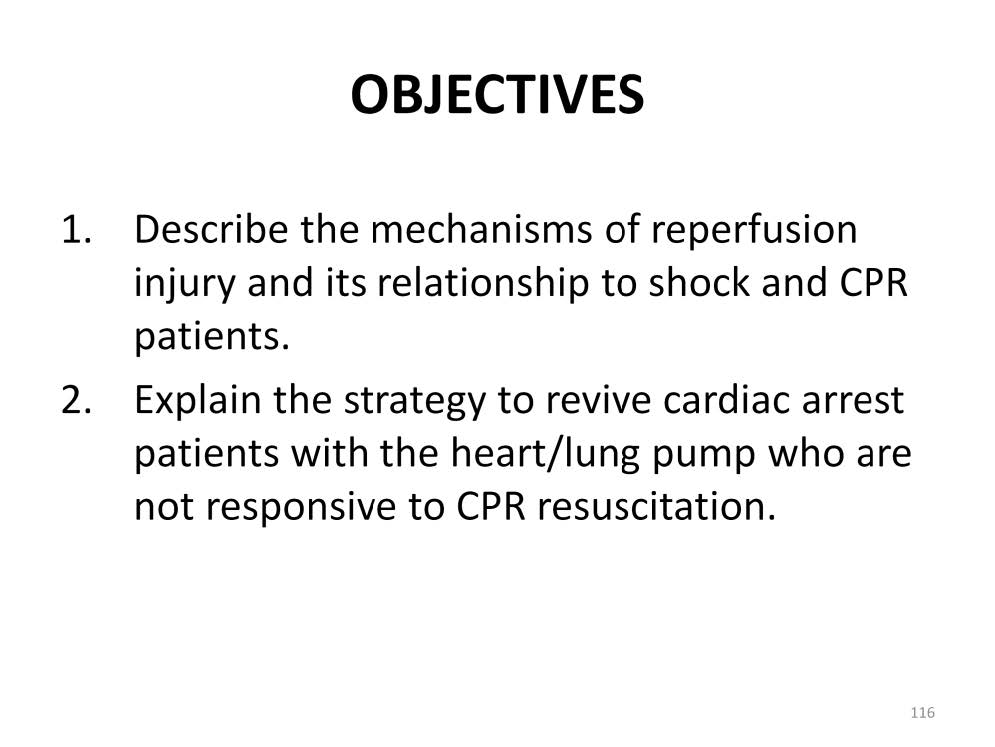
After a patient undergoes a cardiac arrest followed by CPR, the sudden reperfusion of previously ischemic tissues with warm, oxygenated blood either by the return of the patient’s own spontaneous circulation (ROSC) or a heart-lung pump can do more damage than continued ischemia. The resultant reperfusion injury is the barrier that prevents the successful resuscitation of many patients. It is part of a ‘Catch 22“* scenario wherein failure at resuscitation automatically results in the patient’s death and success at resuscitation triggers a reperfusion injury that can frequently result in significant sequelae that are hardly better than death; the so-called post-resuscitation syndrome. At some indeterminate time during a resuscitation episode the patient passes a point of no return wherein cardiac restart or the use of extracorporeal support will result in a lethal reperfusion injury. The goal is not to determine the actual time of the point of no return, which most likely will be less than 30 minutes. The real goal is to take control of the reperfusion injury potential (RIP) by using a strategy of extracorporeal resuscitation that actively combats reperfusion injury, stops the Catch 22 scenario and breaks the reperfusion barrier. A reperfusion strategy using extracorporeal support can change the fundamental nature of resuscitation medicine for the 21st century.
*The term “Catch-22“ describes a problematic situation for which the only solution is denied by a circumstance inherent in the problem. In this case, if resuscitation fails the patient dies. But if resuscitation is successful, the patient still dies as a result of the reperfusion injury caused by the return of capillary perfusion. “Catch-22” is the title of a novel by the American author Joseph Heller who first coined the term.

Perfusion Theory is an educational platform for the Oxygen Pressure Field Theory (OPFT). August Krogh’s theoretical concept of the oxygen pressure field is explained and then applied to clinical applications in perfusion practice.